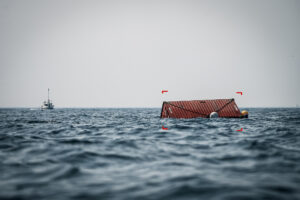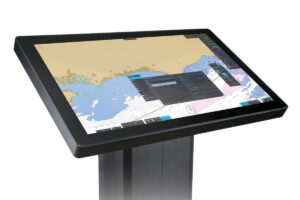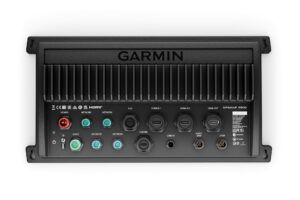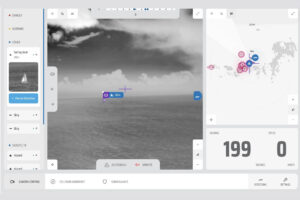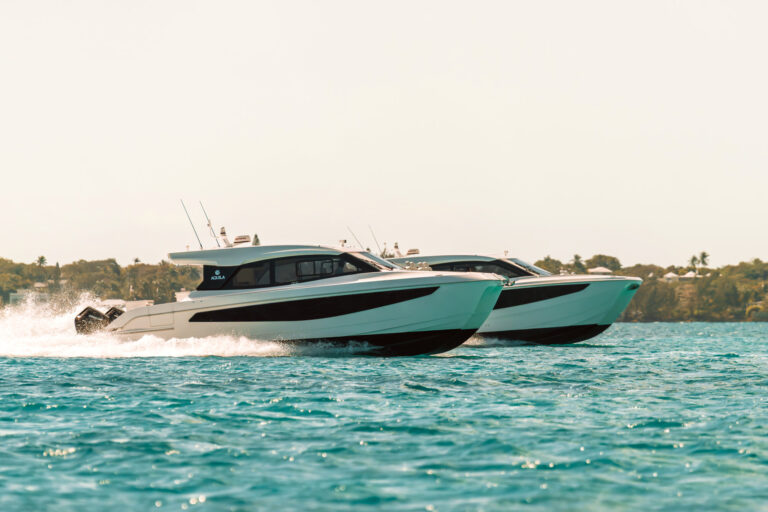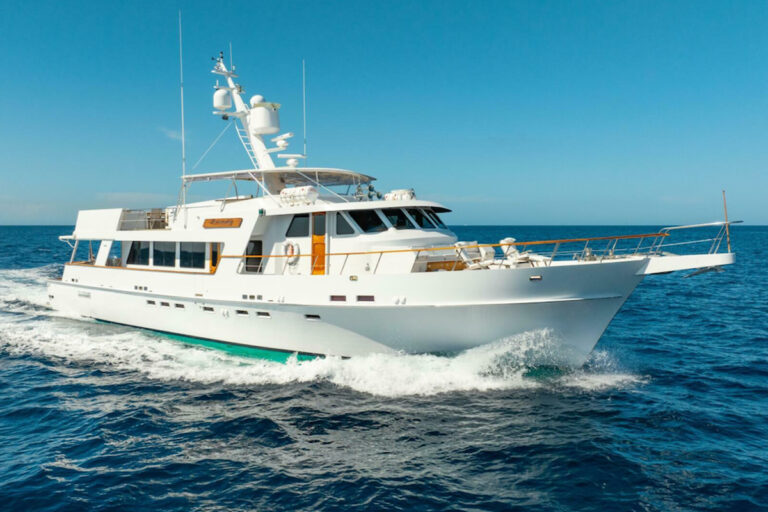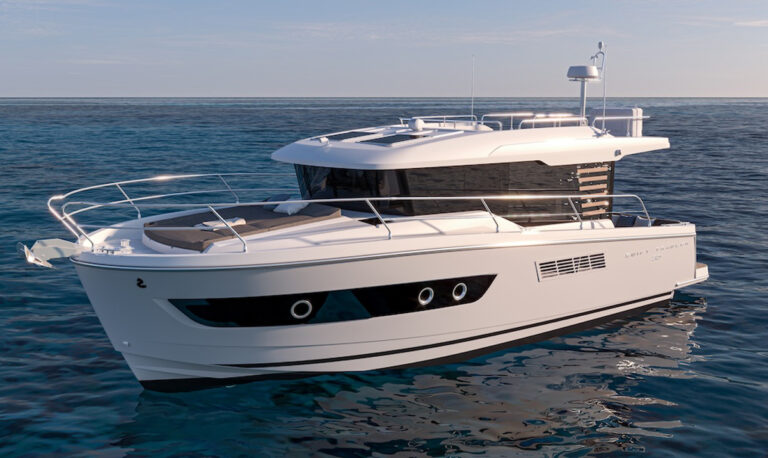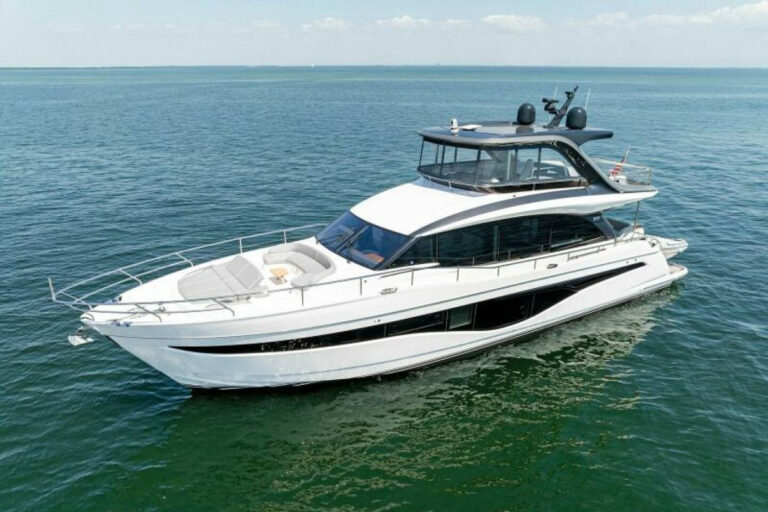
One of the coolest aspects of covering electronics for Yachting has been the opportunity to witness the ever-increasing levels of technological integration that have revolutionized yacht operations. Team Italia, through its i-Bridge installations, has become a leader in technological integration.
That lead now widens with the Panorama Virtualized Bridge Solution. This integrated-helm setup has a user-friendly interface that amplifies an operator’s situational awareness, all in a sleek package that combines the technologies of augmented reality, automation, networking, digital switching, power management and global connectivity.
In regards to hardware and software, Team Italia’s eye-pleasing and highly customizable Panorama VBS includes a main user-interface terminal; numerous video-monitoring screens and touch screens; and a bespoke, Linux-based operating system, as well as scalable levels of built-in redundancy. The system can include side workstations—“wings,” in Team Italia’s parlance—for tasks such as running the vessel’s electronic chart display and information system, radar or forward-looking sonar. The user-interface terminal includes joggers, tracker balls, rotary knobs and (installation depending) hard keys.
A user’s eyes are likely to be riveted to the system’s touchscreen displays: A 4K stretch screen displays augmented-reality imagery, while LED monitors display real-time video footage from the yacht’s abovedecks-mounted cameras. The screens are typically fitted forward and athwartships of the user-interface terminal, and the Panorama VBS can be built into the yacht’s dash or can reside on Team Italia-crafted tables. It all depends on the yacht owner’s desired setup.
While the Panorama VBS is visually stunning, its magic resides behind its touchscreen displays, where the various technologies combine.
“The Panorama VBS uses a heterogeneous system architecture and embedded electronic solutions, with fully redundant central-processing units based on watchdog technology,” says Daniele Ceccanti, Team Italia’s technical director. The “watchdog” technologies monitor and report failures, and can restart applications or reboot the system. “The operating system uses suitably configured Linux solutions, real-time operating systems and customized solutions. Some parts are based on Windows Embedded or Internet of Things architecture.”
The Panorama VBS also has Swiss-Army-knifelike networking capabilities, including NMEA 0183, NMEA 2000, J1939, CAN bus and RS232 ports. Ceccanti says the company develops additional interface protocols and bespoke hardware solutions as projects dictate.
The result is an ergonomically comfortable helm with a state-of-the-art nav system, a full ship’s library (including technical documentation) and built-in power management, plus the processing power necessary to run a sophisticated yacht from a bank of screens. The system also communicates with people and clouds by way of its Boat Connection Manager, allowing users to manage the vessel’s cellular, Wi-Fi and satellite-communication connections.
“The Panorama VBS can be fully scaled up or down, so it can be fitted aboard middle-sized yachts or on mega- and gigayachts,” Ceccanti says, adding that it’s equally adept aboard custom and semicustom builds.
As with some contemporary automobiles, the Panorama VBS includes operating modes that help owners and captains better perform onboard tasks, such as going through a pre-cruise checklist.
“The operator can choose among the various use profiles,” Ceccanti says. “This means that the tools needed for every specific type of navigation are always readily available.”
The augmented-reality features help to simplify tasks such as anchoring. Here, the system employs topsides-mounted video cameras to present, on the system’s LED screens, a graphically augmented rendering of the anchor lowering, as well as information such as real-time depth and the amount of anchor rode that’s been released. The number of installed cameras depends on a vessel’s length overall, with the cameras strategically fitted to deliver panoramic views.

“The Panorama VBS augmented-reality system gives the captain a full view of the environment around the yacht from the bridge,” Ceccanti says. “Through this type of display, which is graphically overlaid with navigation data, the captain can easily manage steering operations from the bridge.”
Ceccanti sees the system’s ability to deliver panoramic views around the yacht as its biggest innovation, however, he also points to the system’s heads-up displays (HUD) as useful tools for negotiating the marine environment. Unlike augmented reality, which overlays data onto video imagery, HUDs present data on transparent screens.
“The HUD allows users to overlap the main navigational information such as course, waypoint, AIS and radar targets with the actual view while sailing,” he says.
Just like the systems aboard modern, fly-by-wire jetliners, the Panorama VBS allows an operator to control all systems and instrumentation via a few screen taps, while other tasks happen automatically.
“The Panorama VBS has its own automation, monitoring and power-management systems, which are perfectly integrated with the system’s navigation and steering functions,” Ceccanti says. Third-party control systems also can be integrated.
Factor in the Panorama VBS’s ability to plan routes and view cartography that’s overlaid with AIS and radar data, as well as the system’s stunning graphics and intuitive user interface, and it’s easy to understand why Team Italia continues to be seen as a leader in the integration of systems.
Of course, as with any impressive technology, it’s important to remember that what’s at the helm is only a tool of safe navigation. It’s critical that operators maintain their comfort and familiarity piloting their vessels the old-fashioned way, perchance calamity strikes.
But for anyone who is considering a new build or refit with a deep dive into onboard integration and helm-side situational awareness, Team Italia’s Panorama VBS could be worth serious consideration.

